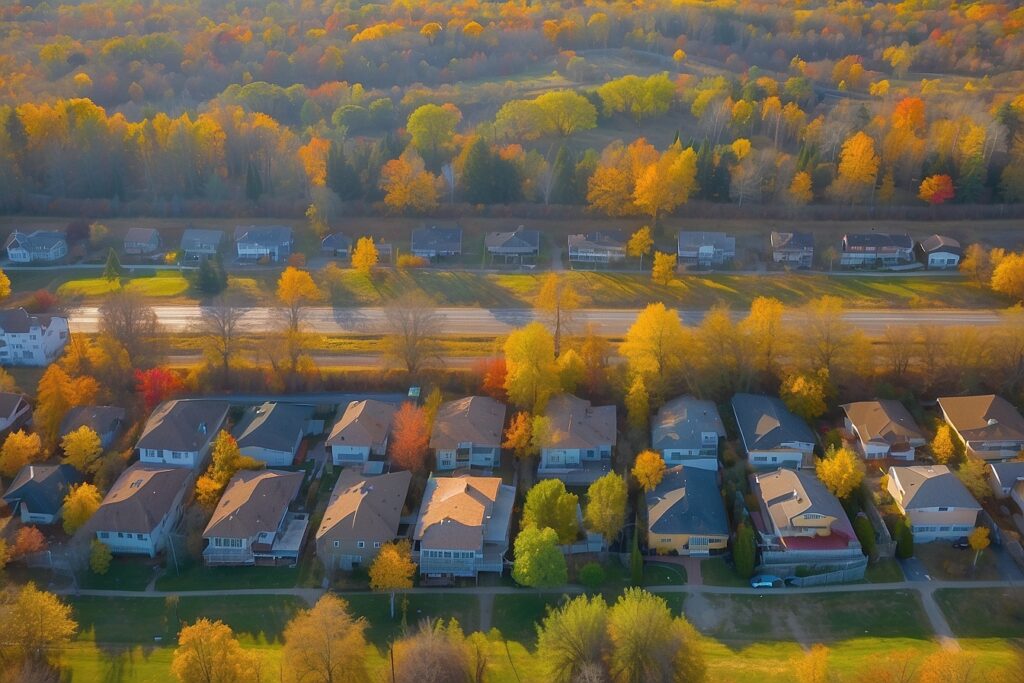
Rising Unemployment and Inflation Drive 22% Increase in U.S. Foreclosures
Newly released data from ATTOM’s Q1 2023 U.S. Foreclosure Market Report reveals a concerning trend in the housing market. The report indicates a total of 95,712 U.S. properties with foreclosure filings during the first quarter of 2023. This marks a 6% increase from the previous quarter and a substantial 22% surge from the same period last year.
March 2023 alone witnessed 36,617 U.S. properties receiving foreclosure filings, depicting a significant 20% rise from the previous month and a notable 10% increase from a year ago. This marks the 23rd consecutive month showing a year-over-year escalation in foreclosure activity across the nation.
Rob Barber, CEO at ATTOM, expressed concern over this upward trend, highlighting multiple contributing factors such as soaring unemployment rates and foreclosure filings navigating through the pipeline post-government interventions spanning two years. He emphasized that ongoing economic challenges have exacerbated the situation.
However, Barber also noted a potential silver lining, pointing out that many homeowners still retain considerable home equity, which could serve as a buffer against the impact of heightened foreclosure activity. Despite the challenges, homeowners’ equity reserves may play a crucial role in stabilizing the market and mitigating the effects of increased foreclosure rates.
Foreclosure Starts Surge Nationwide in Q1 2023
The latest data from Q1 2023 reveals a concerning uptick in foreclosure starts across the United States. A total of 65,346 properties initiated the foreclosure process during this period, indicating a 3% increase from the previous quarter and a substantial 29% rise from the same timeframe last year.
Among the states bearing the brunt of this trend, California led the pack with 6,867 foreclosure starts, closely followed by Texas with 6,764 starts. Florida, New York, and Illinois also experienced significant foreclosure activity, recording 5,724, 4,345, and 4,006 starts, respectively.
In major metropolitan areas with populations exceeding 200,000, New York City saw the highest number of foreclosure starts in Q1 2023, totaling 4,674. Chicago, Los Angeles, Houston, and Philadelphia followed suit, with 3,549, 2,210, 2,120, and 1,985 foreclosure starts, respectively.
The surge in foreclosure starts underscores the persistent challenges faced by homeowners nationwide, reflecting economic uncertainties and potential financial distress. As foreclosure rates continue to rise, policymakers and industry stakeholders are closely monitoring the situation, aiming to implement effective strategies to mitigate the impact on affected communities and stabilize the housing market.
Illinois, Delaware, and New Jersey Lead in Foreclosure Rates
The latest data from Q1 2023 paints a sobering picture of foreclosure rates across the United States, with Illinois, Delaware, and New Jersey emerging as the hardest-hit states.
In Q1 2023, the national average saw one in every 1,459 housing units with a foreclosure filing. However, Illinois stood out with a particularly high foreclosure rate, with one in every 762 housing units experiencing a foreclosure filing.
Following closely behind were Delaware, with one in every 812 housing units, and New Jersey, with one in every 824 housing units. Maryland and Nevada rounded out the top five states with the highest foreclosure rates, each reporting one in every 897 and 947 housing units, respectively.
Among metropolitan statistical areas (MSAs) with populations exceeding 200,000, several regions witnessed alarming foreclosure rates in Q1 2023. Fayetteville, North Carolina, topped the list with one in every 526 housing units facing a foreclosure filing. Cleveland, Ohio, and Atlantic City, New Jersey, followed closely behind, with foreclosure rates of one in 582 and one in 661 housing units, respectively. Other MSAs grappling with significant foreclosure challenges included Columbia, South Carolina, and Bakersfield, California, with rates of one in 671 and one in 688 housing units, respectively.
Several major metros with populations surpassing 1 million also found themselves among the top 15 regions with the highest foreclosure rates nationwide. Notably, Cleveland, Ohio, secured the second position, followed by Chicago, Illinois, Las Vegas, Nevada, Philadelphia, Pennsylvania, and Riverside, California, ranking at numbers 6, 10, 12, and 14, respectively.
These alarming figures underscore the urgent need for targeted interventions to address foreclosure crises in these regions, safeguarding homeowners and stabilizing local housing markets.
Bank Repossessions Surge in First Quarter of 2023
The first quarter of 2023 witnessed a notable uptick in bank repossessions across the United States, reflecting growing challenges in the housing market.
Lenders repossessed a total of 12,518 properties through foreclosure (REO) in Q1 2023, marking an 8 percent increase from the previous quarter and a 6 percent rise compared to the same period last year. This surge in REO activity underscores the continued pressure facing homeowners and lenders alike.
Leading the pack in terms of REOs in Q1 2023 were several states grappling with significant foreclosure challenges. Michigan topped the list with 1,819 REOs, followed closely by Illinois with 1,039 REOs. California, Pennsylvania, and New York also witnessed substantial REO numbers, reporting 846, 788, and 774 REOs, respectively.
The increase in bank repossessions paints a concerning picture of the housing landscape, signaling ongoing economic uncertainties and financial strains for many homeowners. As the housing market navigates these challenges, stakeholders must remain vigilant in implementing strategies to mitigate foreclosure risks and support affected individuals and communities.
Foreclosure Process Lengthens Across the U.S.
The average time it takes to foreclose on properties in the United States surged significantly in the first quarter of 2023, reaching the highest level since the first quarter of 2018.
According to recent data, properties foreclosed in Q1 2023 had been in the foreclosure process for an average of 950 days. This marks a notable 12 percent increase from the previous quarter and a 4 percent rise compared to the same period last year. The prolonged foreclosure timelines underscore the challenges faced by both homeowners and lenders in navigating the foreclosure landscape.
Leading the pack in terms of the longest average foreclosure timelines were several states grappling with extensive foreclosure procedures. Louisiana topped the list with an average foreclosure timeline of 2,770 days, followed closely by Hawaii with 2,486 days. New York, Kentucky, and New Jersey also reported lengthy average foreclosure timelines, standing at 1,963, 1,881, and 1,697 days, respectively.
On the contrary, some states demonstrated shorter average foreclosure timelines for properties foreclosed in Q1 2023. Wyoming emerged with the shortest average foreclosure timeline of 111 days, followed by Minnesota with 141 days. Montana, Texas, and Arkansas also showcased relatively brief foreclosure timelines, with averages of 143, 146, and 157 days, respectively.
As the foreclosure process continues to evolve, stakeholders must remain vigilant in addressing the complexities associated with foreclosure proceedings, ensuring timely and equitable resolution for affected parties across the nation.
March 2023 Foreclosure Activity: Insights and Trends
As the housing market landscape evolves, new data reveals significant trends in foreclosure activity across the United States in March 2023. Here are the key takeaways from the latest findings:
- Foreclosure Filing Rates:
- Nationally, one in every 3,813 properties received a foreclosure filing in March 2023. This metric provides insight into the prevalence of foreclosure activity across the country.
- States with High Foreclosure Rates:
- Illinois led the nation with the highest foreclosure rate, with one in every 2,050 housing units experiencing a foreclosure filing.
- Delaware, Nevada, Indiana, and New Jersey followed closely behind, with foreclosure rates ranging from one in every 2,161 to 2,299 housing units.
- Foreclosure Starts:
- A total of 24,234 U.S. properties initiated the foreclosure process in March 2023. This marked a notable 19 percent increase from the previous month and an 8 percent rise from March 2022.
- Foreclosure Completions:
- Lenders completed the foreclosure process on 4,791 U.S. properties in March 2023. This represented a significant 25 percent surge from the previous month and a 9 percent increase from March 2022.
These insights shed light on the evolving dynamics of foreclosure activity, highlighting both challenges and opportunities within the housing market. Stakeholders across the industry can leverage this data to better understand the current landscape and inform strategic decision-making moving forward.




Thanks for sharing. I read many of your blog posts, cool, your blog is very good.
Hello there, just became alert to your blog through Google, and found that it’s really
informative. I’m going to watch out for brussels.
I will appreciate if you continue this in future. Numerous people will
be benefited from your writing. Cheers! Escape room